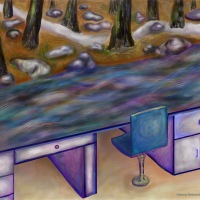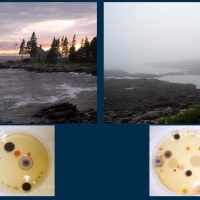Conducting a Lab Experiment on the Properties of Acids and Bases
Welcome to the fascinating world of acids and bases, where chemical reactions bring a burst of excitement to our lives! Have you ever been curious about what makes certain substances sour or why soap feels slippery? The answer lies in the captivating properties of acids and bases. In this article, we will take you on a thrilling journey through a hands-on lab experiment that will unravel the secrets behind these remarkable substances. So put on your lab coat, secure your safety goggles, and let's dive into the enthralling realm of chemical reactions!
Understanding Acids and Bases
Before we embark on our lab experiment, let's develop a solid understanding of acids and bases. These two groups of chemicals have distinct characteristics that make them both intriguing and indispensable.
Definition of Acids
Acids are like the rebellious daredevils of the chemical world. They possess a mischievous nature and delight in donating protons (positively charged particles) to other substances. When an acid dissolves in water, it releases hydrogen ions (H+), which are responsible for its acidic properties. But what exactly does this mean?
Definition of Bases
On the other end of the spectrum, we have bases, the noble peacekeepers of the chemical realm. Bases are substances that readily accept protons or donate hydroxide ions (OH-) when dissolved in water. The hydroxide ions help neutralize the excess hydrogen ions present in acids, thereby reducing the overall acidity.
If you're interested in exploring these concepts further, you can even buy a lab report to gain hands-on experience and deeper insights into the experiments conducted in the field of acids and bases.
Properties of Acids
Now that we have a grasp of the basic definitions, let's delve deeper into the captivating properties of acids. Brace yourself for a thrilling exploration of their sour taste, corrosiveness, and pH level.
Sour Taste
Have you ever puckered your lips while savoring a slice of lemon or tasted the tanginess of a vinegar-dressed salad? That delightful, mouth-watering sensation can be attributed to the acidic nature of these substances. Acids, by their very essence, tend to impart a sour taste when they come into contact with our taste buds. So the next time you enjoy a zesty citrus fruit, thank the acids for their tangy contribution!
Corrosiveness
While acids may entice our taste buds, some of them possess a more aggressive side. They have the power to corrode certain materials through chemical reactions. For example, imagine leaving a piece of metal in contact with lemon juice for an extended period. You might find it covered in rust! However, it's essential to note that not all acids are equally corrosive. So there's no need to worry about your stomach turning into a bubbling cauldron after enjoying a refreshing glass of lemonade.
pH Level
Ah, the mysterious pH level! This numerical scale ranging from 0 to 14 measures the acidity or alkalinity of a solution. Acids have a pH value below 7, with lower values indicating higher acidity. So, when life hands you lemons, you can confidently say they have a pH below 3, making them incredibly acidic! On the other hand, a neutral solution, like pure water, has a pH of 7. Understanding the pH level allows us to gauge the acidic or basic nature of various substances and appreciate their unique properties.
Properties of Bases
Now that we have explored the acidic side of the equation, let's shift our attention to the captivating properties of bases. Prepare to savor the bitter taste, experience the slippery feel, and uncover the pH level associated with these remarkable substances.
Bitter Taste
Have you ever savored a piece of unsweetened chocolate or taken a sip of coffee without any sugar? If so, you have already experienced the distinctive bitter taste of bases. Bases have the remarkable ability to evoke this flavor sensation, offering our taste buds a departure from the usual sweetness. So the next time you enjoy that bittersweet dark chocolate, remember that bases are responsible for that delightful bitterness.
Slippery Feel
Picture yourself holding a bar of soap under running water. As you glide your hands over the surface, you feel a distinct slipperiness. This is due to the presence of basic substances in soap. When these bases come into contact with water, they produce hydroxide ions, resulting in the formation of a soapy solution. These ions reduce the surface tension of water, making it easier for us to get squeaky clean during our daily showers. So, next time you relish that refreshing, slippery sensation while lathering up, thank the bases for their role in keeping us clean!
pH Level
Just like acids, bases have their own specific pH levels. However, in contrast to acids, bases have a pH value above 7, indicating alkalinity. So, when you encounter a basic substance, consider it a pH superhero, battling acidity to maintain balance in the chemical world.
To explore more publications by EduEkerLab, please visit EduEkerLab Publications.
Conducting a Lab Experiment on Acids and Bases
Now that we have laid a solid foundation of knowledge, it's time to roll up our sleeves and immerse ourselves in a thrilling lab experiment that explores the properties of acids and bases. Let's dive into the materials required and the step-by-step procedure to conduct the experiment.
Materials Required
To embark on this scientific quest, gather the following materials:
- Red cabbage juice (acts as a natural pH indicator)
- Various household substances (lemon juice, vinegar, baking soda, etc.)
- Test tubes or small glass containers
- A pipette or dropper
- Safety goggles and gloves (safety first!)
If you're interested in exploring these concepts further, you can even buy lab report to gain hands-on experience and deeper insights into the experiments conducted in the field of acids and bases.
Procedure
- Begin by preparing the red cabbage indicator. Boil chopped cabbage in water for approximately 10 minutes. Once done, strain the liquid and allow it to cool. Congratulations! You now have your very own homemade pH indicator.
- Pour small amounts of different household substances into separate test tubes or glass containers.
- Using a dropper or pipette, add a few drops of the red cabbage indicator to each container, one at a time.
- Observe the color changes that occur when the indicator reacts with the substances. Take note of any significant transformations.
- Record your observations and make a note of the pH levels associated with each substance.
Observations and Results
Now comes the exciting part—analyzing your observations and uncovering the fascinating results of your experiment. As you add the red cabbage indicator to the various substances, you may witness a mesmerizing kaleidoscope of colors. Some substances may turn acidic solutions pink or red, while basic solutions might transform into shades of blue or green. Take a moment to marvel at the chemical reactions unfolding before your eyes and embrace the wonders of the microscopic world.
Applications of Acids and Bases
Acids and bases play vital roles in numerous aspects of our lives, often working behind the scenes to create the products and experiences we rely on. Let's explore a few examples to illustrate their importance:
- Acids find applications in the production of fertilizers, batteries, and certain medications. They are also crucial in various chemical reactions and industrial processes.
- Bases are essential for manufacturing cleaning products, such as detergents and drain cleaners. They contribute to the effectiveness of these products in breaking down dirt and grease.
- Acids and bases are integral to the food and beverage industry. They enhance flavors, aid in food preservation, and play a role in fermentation processes.
Conclusion
Congratulations! You have successfully embarked on a thrilling journey through the properties of acids and bases. From the tangy taste of lemons to the slippery sensation of soap, we have explored the diverse characteristics that make these substances so intriguing. By conducting a lab experiment, you have witnessed firsthand the magical transformations that occur when acids and bases interact with a natural pH indicator. Remember, the world of acids and bases is filled with endless scientific wonders waiting to be discovered. So, embrace your curiosity, keep exploring, and let the allure of chemical reactions continue to captivate your imagination.







